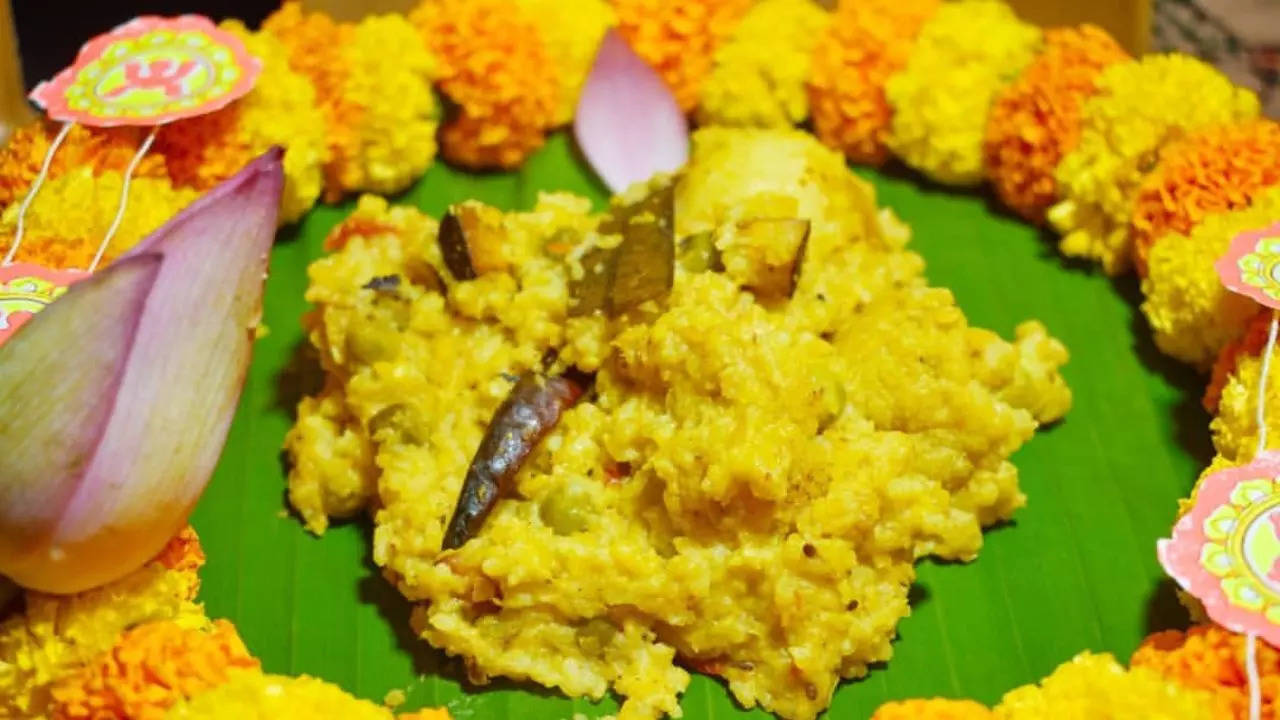Table of Contents

Kojagiri Purnima Lakshmi Puja: Durga Pujo is one of the most significant times of the year in West Bengal, but right after the celebration of Maa Durga and her avatars comes to a close, there’s another favourite festival in store. Lakshmi Puja (or Lokkhi Pujo) holds an emotional significance for Bengalis and is a time when families and friends come together to offer prayers to the Goddess Lakshmi for prosperity and wealth in the coming year. This year the Kojagara Puja falls on the 16th of October.
Where Durga Puja is all about grand pandals and community celebrations, Lakshmi Puja is a time for family and most of the rituals are performed at home. As per the legends, on Kojagara Puja, the Goddess roams the earth bestowing blessings on homes that are well prepared to receive her. A large part of that process is preparing a grand bhog for the day that reflect the local favourites and represent thankfulness, unity, and purity.
Also See: Kojagiri Puja 2024: Date, Timings, Significance and Lakshmi Puja Muhurat
Labra
Also know as Bhoger Labra, this is a dish you’ll often see on Bengali tables during festive occasions. Made with mixed vegetables (typically seasonal) that can vary from household to household but often include things like raw bananas, brinjals, banana stem, cauliflower, pumpkin, or borboti (yardlong beans). No onion or garlic is used in this dish but the bulk of the flavour comes from Panch Phoron and Bhaja Masala, only with generous amounts of mustard oil and ghee.
Khichuri
One of those dishes that is both simple and rich in flavours, khichuri is an essential part of any Bengali bhog. Every family has their own favourite additions, but the base is generally always the same made with local shona moong dal which are first dry roasted for extra flavour and gobindobhog rice – a short grained rice variety which is aromatic and flavourful on its own. Vegetables like potato, cauliflower and peas are sometimes added, as are coconut slices or paste. Some also like to finish the dish with fried cashews and raisins or a tempering of spices like cinnamon and cardamom.
Naru
Sweets are a must-have on any Indian festival and Lakshmi Pujo is no different. Whether its Narkel Naru made by rolling together freshly grated coconut with jaggery, the nutty and crunchy Til Naru made with auspicious sesame seeds which are lightly toasted and kneaded into jaggery, Naru are perfect to share with friends and guests on the celebration.
Payesh
When offering the goddess a sweet for the festival, Payesh is often the popular choice. This rice pudding is beloved among all Bengali homes and is often a symbol of prosperity. The dish is made by slow cooking Gobhindobhog rice with sugar or jaggery and full cream milk until it thickens and becomes a rich, creamy mixture. You can also add a touch of saffro for aroma and finish with chopped nuts.
Luchi And Cholar Dal
Soft, fluffy and extremely moreish, you can’t have Lakshmi Puja without some golden fried luchis and a bowl of Cholar Dal. Luchis differ from the more common puris as they’re made from maida, and are typically much softer. Served with Cholar Dal made with coconut, ginger and garam masala, it’s a simple meal that inspires comfort.
Khoi Er Moa
Rice holds a place of great importance during Indian festivals, and this sweet reflects that. Made with Kankachur Khoi, a rare variety of puffed rice, and Nolen Gur (date palm jaggery), available only in the cooler months, are key ingredients in Joynagarer Moa. This traditional Bengali sweet, resembling a laddoo, is named after Joynagar in the South 24 Parganas district, where it originates.

